I know that some of the articles in this series veered into heavy topics. So let’s take things in a less serious direction for a moment now that I’ve completed the travelogue portion. It’s no secret that I enjoy signage, the more unusual the better. Sometimes I even collect them within a single article, and that’s exactly what I’m doing again today.
Mahalo
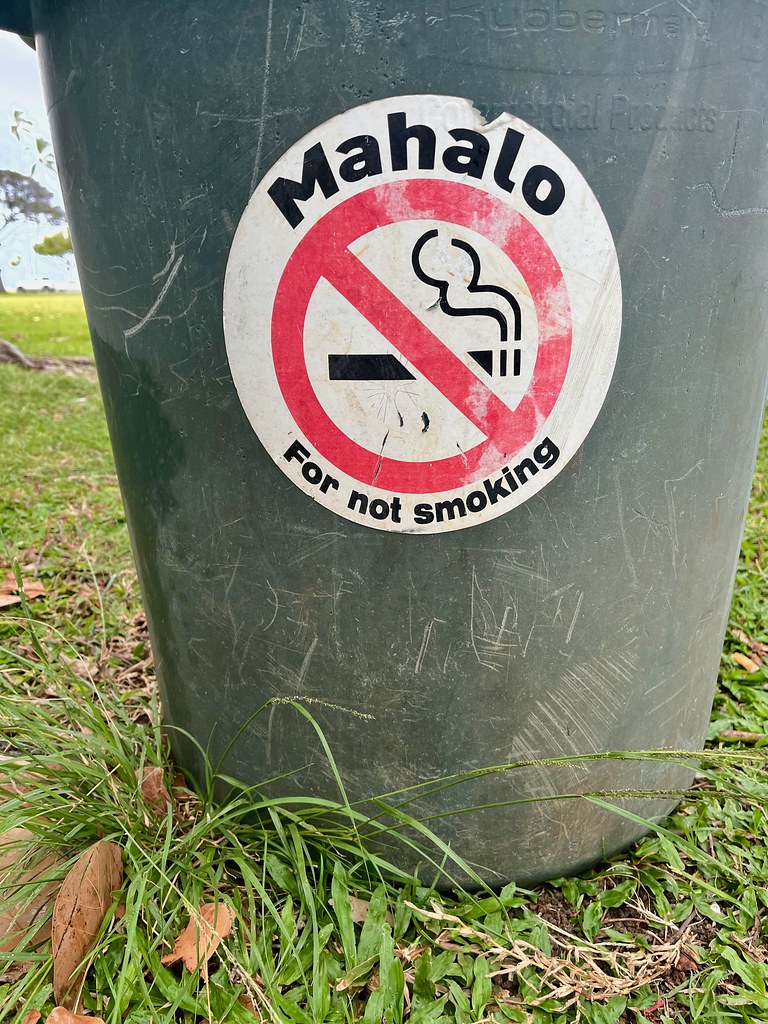
Mahalo derives from Proto-Polynesian and represents an expression of thanks or gratitude in Hawaiian, especially where it intersects with English. Residents and visitors alike will see the term appear rather ubiquitously, probably second only to the use of Aloha.
It’s certainly Hawaiian, but it has successfully transitioned into common English usage within that geographic area. I guess I shouldn’t be too surprised to see it affixed to a trash can in Honolulu’s Ala Moana Park. In this context the expression thanks people for not smoking. But if someone wants to be a jerk they can still do it, I guess, although they won’t get any mahalo.
Aloha Shirt Zone
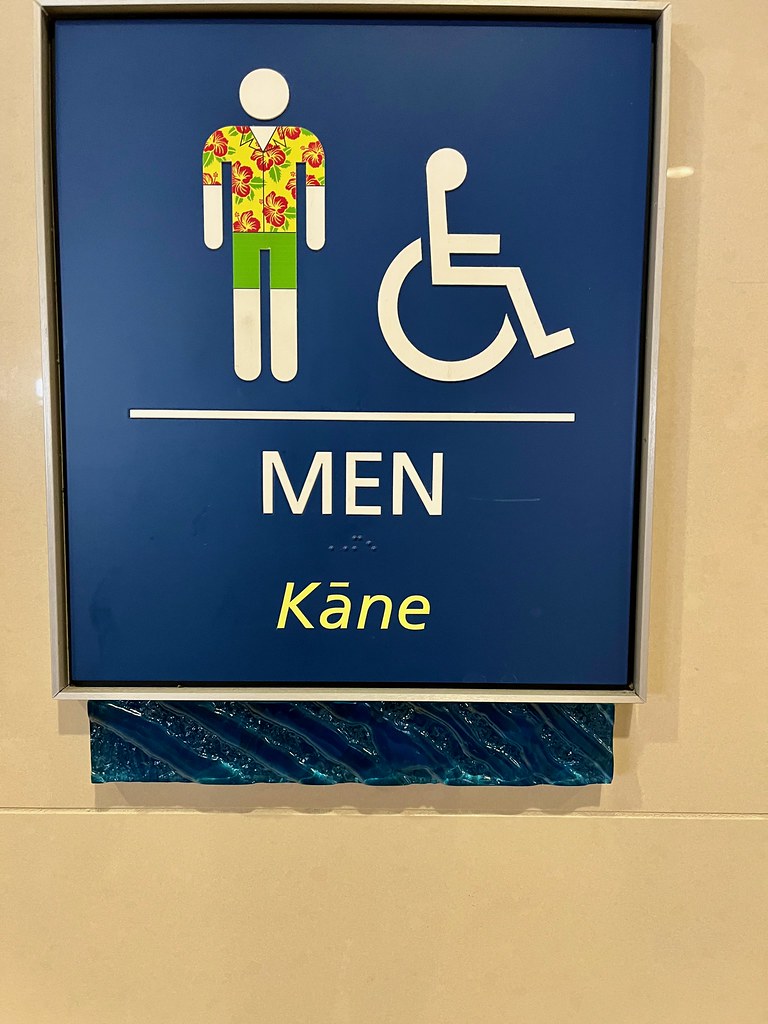
So then we get to Aloha which is used even more commonly. In fact it’s so pervasive that it even defines a style of shirt. They seem to be acceptable in most social situations. Well, naturally tourists favor them and the tackier the better. However it’s not uncommon to see them in settings where business casual clothing is acceptable too. I saw plenty of aloha shirts in meetings I attended. The fashion even transcends to the men’s room at the Honolulu Airport… one last chance to wear an aloha shirt before returning to the mainland?
Land of the Happy Sexy Beer

There’s so much mangled English in Japan that it borders on cliché and even has it’s own name (“Engrish“). I think my favorite was “Have a Happy Sexy Beer” at a restaurant near the Tokyo Skytree. But then I thought about it some more. This was a high-traffic area with plenty of foreigners so I wonder if they mangled it on purpose as a joke or a marketing ploy? I saw plenty of true, genuine language weirdness in out-of-the-way places though. Maybe I’m overthinking it.
Tsunami

English certainly borrows from Japanese too. For instance, a tsunami (“harbor waves“) is bad news in any language. However, nobody has to be able to read actual words to decipher the sign. Hey, if the big wave is heading in your direction, run away! I thought it was particularly apropos to see such a sign in Japan — the linguistic home of the tsunami — while at the Yokosuka naval base. The correct word in the correct place.
Oh Those Toilets
High-tech toilets weren’t such a thing when I first visited Japan a quarter century ago. Back then I even saw a few of the ancient squat toilets. You don’t even want to know. This trip, most toilets were similar to those found in the North America or Western Europe. However, I did run into a few that required a little more brainpower to operate.
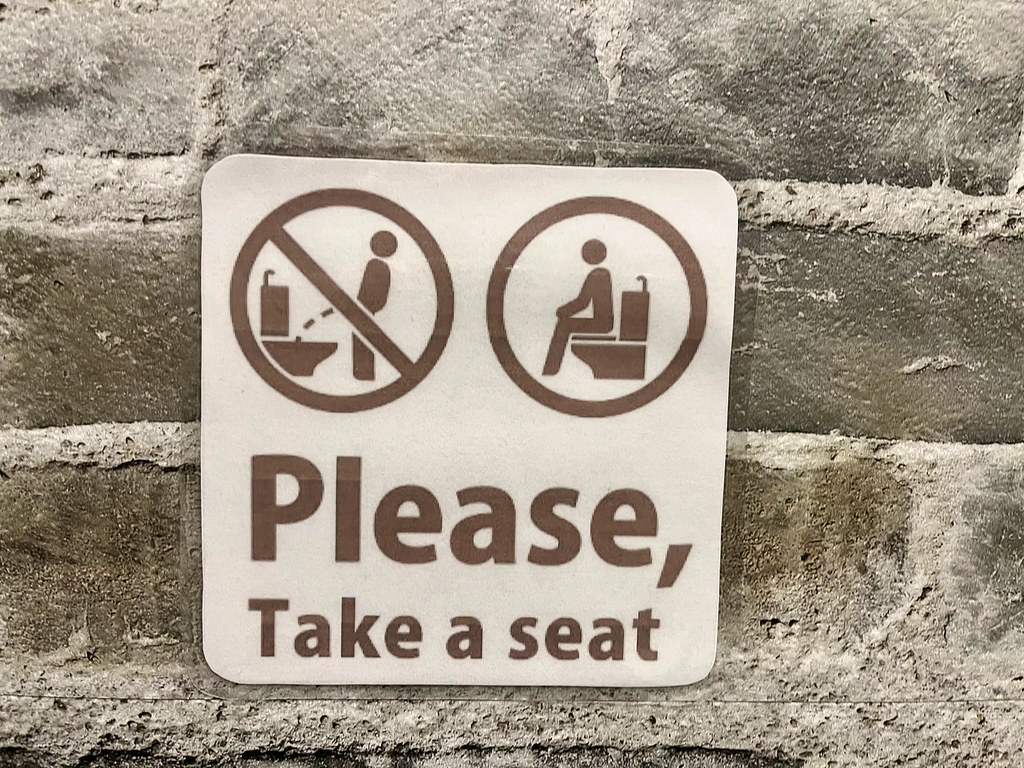
Actually this one wasn’t so bad but it only worked if the user sat down. It was quite comfortable too, with a nicely warmed, padded seat. Yes, I liked that one. But I guess they had enough problems with Westerners not realizing that the seat activated the flusher so they added a sign.
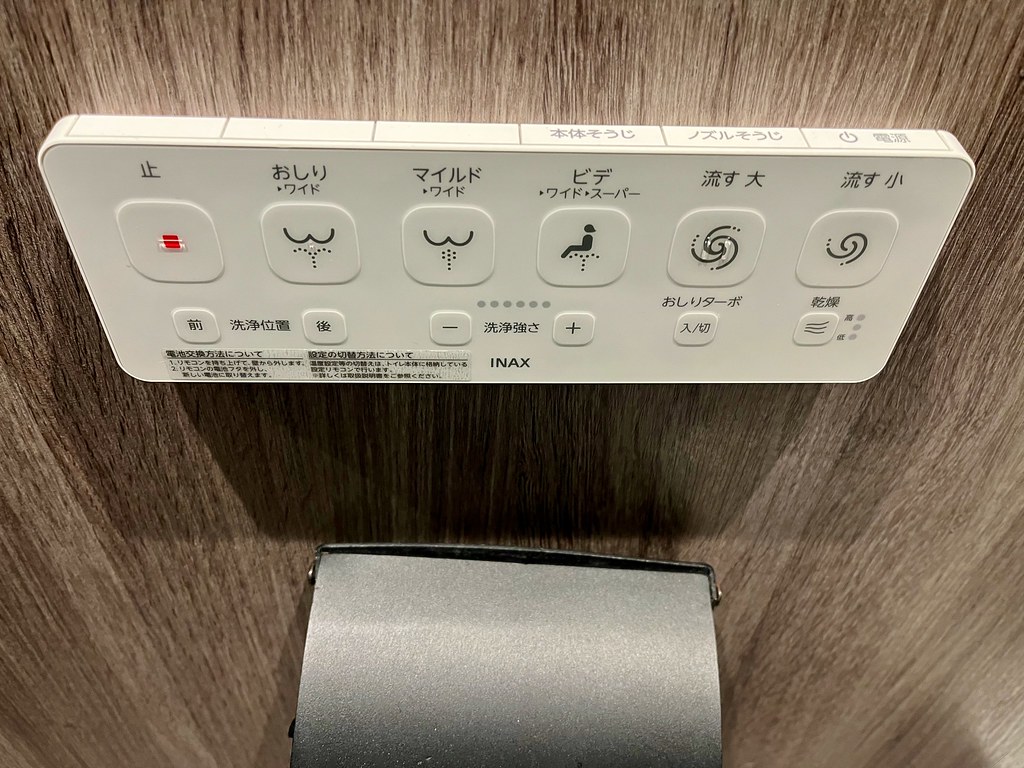
Then there were toilets like this. I have a friend who lived in Japan for several years and he said, “it’s the land of engineers who have too much time on their hands.” Case in point. Someone put a whole lot of thought into this toilet console.
Thank goodness for pictograms. I figured I didn’t need any of the water shooter thingies so I went straight for the swirly on the far right. It seemed to do what I needed. I have no idea what all those little buttons along the bottom accomplish but I wasn’t in a mood to try to figure them out either. I might have created a restroom tsunami.
At the DMZ
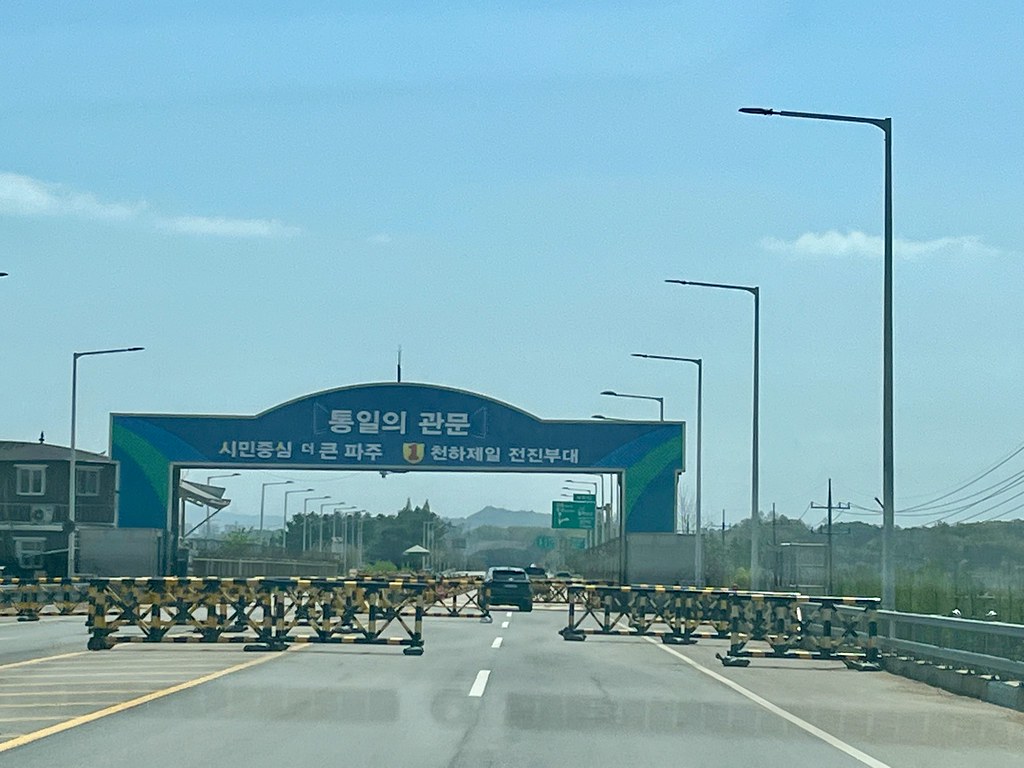
Google Translate helped out a bunch, particularly the feature that interacted with a phone camera. We left the Korean Demilitarized Zone briefly to grab lunch before our tour of the Joint Security Area. This was the sign as one leaves the DMZ on the South Korean side. So I checked the translation and it said “Gateway to Unity” which seems to make sense. The lower part talked about the troops stationed there. It wasn’t all that big of a revelation although it’s still fascinating to see it display in real time on a phone screen.
Kimchi Warning

I can only imagine the incident that led to Korean Air banishing kimchi to the cargo hold. Notably, some of that fermented cabbage can get quite fragrant, and probably much worse with the confines of an airplane. All I can say is Bless You Korean Air for heading off that possibility during my 14 hour flight from Incheon Airport to the United States.
Articles in the Asia-Pacific Series
- Oahu: Honolulu Waterfront
- Oahu: Beyond Waikiki
- Japan: Tokyo Temples and Tourists
- Japan: Exploring Tokyo
- Japan: Farther Afield
- South Korea: Seoul
- South Korea: The DMZ
- Postscript: Interesting Signs
- Postscript: Brew It
See Also: The Complete Photo Album on Flickr

Leave a Reply